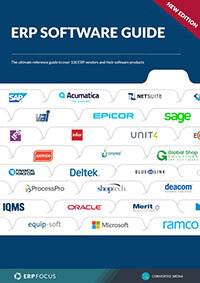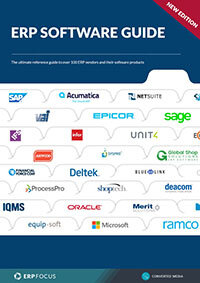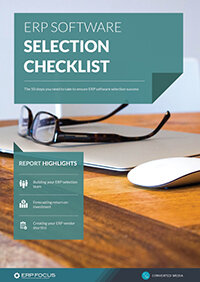Stand-Alone ERP: Advantages and Disadvantages
Stand-alone ERP vs a modular system is one of many choices to make when selecting software for your enterprise. For many, there isn’t a wrong choice but it is important to understand the differences as this could affect your choice, even if only due to a personal preference.
A typical stand-alone ERP will include all the components you expect in a single package. These components roughly correspond to the functional parts of an organization. Finance, sales, engineering, production, distribution, and quality control are some functional departments and all are represented in ERP systems.
GET ERP RESEARCH & KNOWLEDGE RIGHT TO YOUR INBOX
Covering the key issues faced by businesses selecting and implementing ERP.
Cloud ERP = Stand-Alone ERP
One of the most common delivery systems for an ERP today is through the cloud. These are provided by suppliers using software and databases hosted and maintained by the supplier. Nearly all of the cloud ERP systems are stand-alone so this one factor might make your decision for you.
Stand-Alone ERP Minimizes Data Redundancy
Stand-alone ERPs will also minimize any data redundancy. Any data element used by different departments will be kept in a single table accessed by all.
User Experience is Consistent
The look and feel of a stand-alone ERP will also be consistent throughout. The appearance of a query screen in sales will be familiar to a buyer using a query screen in purchasing.
Security Controls are Centralized
A stand-alone ERP will often be controlled at headquarters so that access rights and other security controls are managed at all sites and all departments. This is a benefit to many companies, especially to the IT people. Other users might see this a disadvantage as an IT person in another location controls how they are allowed to do their work.
All Integration is Centralized
Integration of third-party (non-ERP) software needs to be considered. Many systems must be integrated centrally even though they are only used in a few remote sites. If support needs to pass from a user with a problem at a remote site through another person at a central site who isn’t familiar with the software, there is a high probability of miscommunication.
Minority Users are Marginalized
A stand-alone ERP might be selected because it meets the needs of most users. At the same time, it might poorly meet the needs of a minority of the same users. Those users might be forced to get the results they need from an inferior ERP (for them). They might develop work-arounds that satisfy some of their needs and that could affect other users.
You can’t satisfy all the people all the time, but understanding the pros and cons of key ERP selection decisions is essential. Be sure you are aware of perceived defects and try to meet the needs of the majority of users.
Free white paper

ERP Software Guide
A 70 page guide covering over 100 different software products

Featured white papers
-

ERP Software Pricing Guide
Get the latest pricing information on over 80 popular ERP systems, and learn how to budget for your ERP project in our free guide
Download -

60-Step ERP Selection Checklist
Get the comprehensive checklist for your ERP selection project
Download -

ERP Requirements template
Plan your ERP selection using our requirements template with 100 features in an editable spreadsheet. Include special requirements and extra detail in this exclusive template.
Download
Related articles
-

The best ERP systems for process manufacturing
Consider these ERP systems when selecting your next process manufacturing ERP
-

CMMC Compliance: What Aerospace and Defense Manufacturers Need to Know
Key insights on CMMC compliance, deadlines, and securing DoD contracts with CMMC 2.0 certificatio...
-

5 ERP pricing definitions you need to understand
Have you mastered the ERP pricing lexicon yet? Getting to grips with these five definitions is a ...

